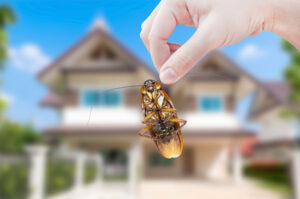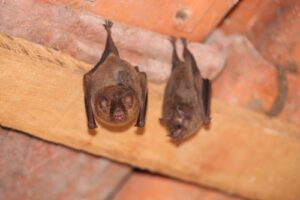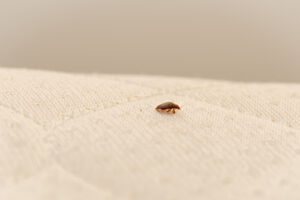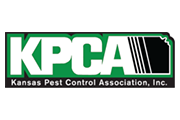Unfortunately, homeowner’s insurance does not cover termite damage. Nevertheless, these tiny insects cause billions of dollars of destruction to homes every year. Having a clear sense of how to spot them, what attracts them and the damage that they do is the first step in protecting your home.
The Five Signs
Termites can be either subterranean termites or drywood termites. To spot the signs, look for:
1. Wood Damage. Long narrow grooves or tiny holes will be cut into the wood of floors, walls or other elements of your home that are made of wood. Only the surface may remain, with the body of the wood underneath hollowed out.
2. Buckled or Cracked Paint. Damage underneath may leave paint or other surfaces buckled, cracked or bubbled.
3. Mud Tubes and Tunnels. Regardless of season, look for signs of tunneling where your home meets the ground. Narrow mud tubes often extend from the nest to food sources like your home. Tunnels may go through the wood and into the ground or extend from the ground, over the foundation and into an access point. Feces may also be present.
4. Swarms or Wings Only. Termites use their wings only to swarm from the nest to a new colony site. Once they arrive at home access points, they shed their wings. Termites have four wings that are all the same size; in contrast, ants have two larger and two smaller wings.
5. Live Termite. Worker and soldier termites are tiny—just ¼ inch long—white and wingless. Workers are busy chewing, burrowing and working while soldiers have pincer jaws for fighting. Only kings and queens can reproduce; they are also larger—about ½ inch long—have wings and functional eyes, and are brown or black.
What Attracts Them
Termites are looking for several things:
– Food. Termites will eat anything that contains cellulose, or plant-based material. This includes paper, bark, cardboard and untreated mulch, for example.
– Darkness. While swarms are attracted to light, the actual colony prefers concealment from predators.
– Moisture. Termites need a damp, moist, humid environment to digest wood.
– Warmth. Their ideal temperature is 75 degrees. Winter, however, doesn’t stop termites. Subterranean colonies will dig deep—as much as 40 inches down—or tunnel toward warmer shelter.
– Access. Any crack or crevice can serve as an entry point to your home—for them, food.
The Damage That They Do
Termites attack more than building structures. They can and have consumed historical books, important documents and valuable photographs. Even though they won’t consume other materials like drywall and plastics, termites will chew through them to reach wood. Because unseen insects typically work from the ground for years before they’re discovered, they can undermine a building’s supporting structure.
Kings and queens can easily live for a decade or longer, producing hundreds of thousands of worker and soldier termites to support huge colonies. Left uncontrolled, a colony may expand through a secondary reproductive caste and satellite nests, increasing territory, numbers, consumption and damage.
Prevention is key, but so is effective treatment. If you would like to protect your home—or if you suspect that you already have termites—call 888.821.4508, or visit our website. Advantage Termite & Pest Control services the greater Kansas City Metro, Lawrence and Topeka areas, and we’re here to serve you.












